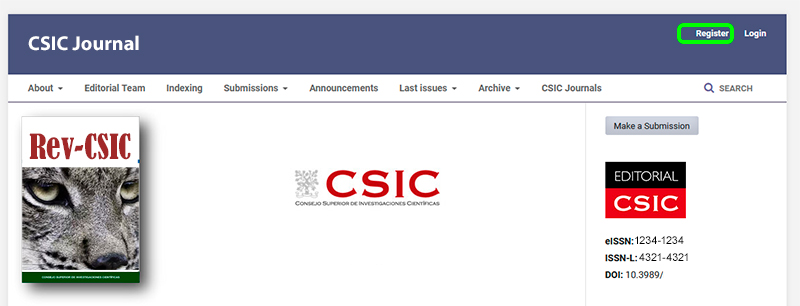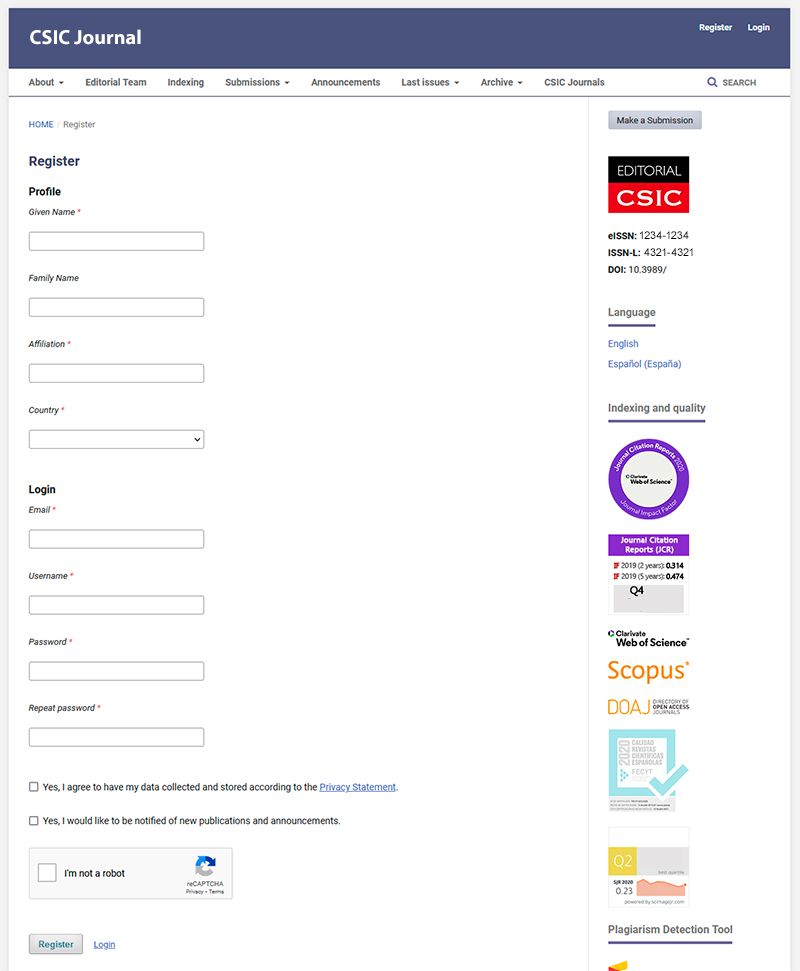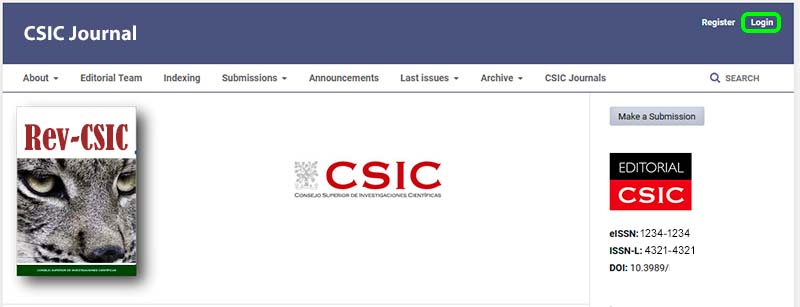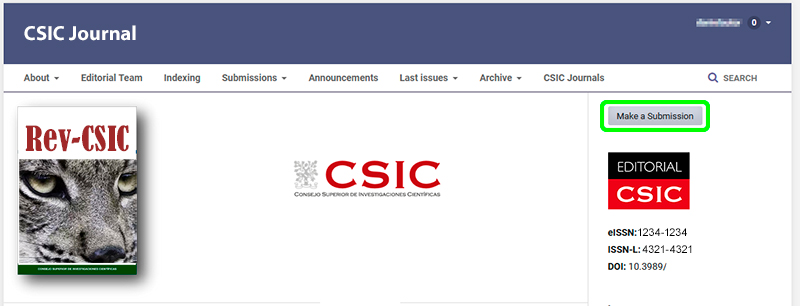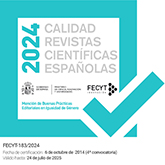Submissions
Submission Preparation Checklist
As part of the submission process, authors are required to check off their submission's compliance with all of the following items, and submissions may be returned to authors that do not adhere to these guidelines.- I've read Editorial CSIC's Good Practice Code and comply with all its guidelines.
- The Authorship, good publication practice and copyright transfer statement is filled and signed, and it'll be added to the submission.
- The article has not been previously published, and has not been sent to another journal for consideration.
- The submission is an original work and does not violate the copy and reproduction rights of other authored works. If necessary, the author has written permit for the reproduced work and a copy will also be submited.
- The person making the submission has been authorized by all the article authors to submit and act as their spokesperson in front of the journal during the review, editing and publishing processes.
- I have consulted and applied the journal's Research data policy.
- The text adheres to the length, format, references, citation of figures, tables and equations (if applicable), and bibliography requirements outlined in the journal guidelines.
-
Each of the authors has been identified including the following data:
- Given name (in full form) and family name(s).
- Email contact address.
- Country of professional activity.
- Institutional affiliation.
- Open Researcher and Contributor Identifier (ORCID).
- Role/roles according to the CRediT taxonomy. -
TWO versions of the article are submitted:
1) a Microsoft Word, LibreOffice, or compatible file, with all the information regarding the author, and references to images, tables, and other graphic elements where appropriate.
2) a PDF file as above, including the full graphical apparatus, and excluding elements that identify the author (name and affiliation, CRediT role(s), self-citations, personal notes, etc.) and the file's metadata (check the PDF's “Properties” in the “File” section). To remove the metadata, you can use specific software or free tools available on the Internet.
This PDF version, already anonymized, will be the one subject to external evaluation."
Copyright Notice
© CSIC. Manuscripts published in both the printed and online versions of this Journal are the property of Consejo Superior de Investigaciones Científicas, and quoting this source is a requirement for any partial or full reproduction.All contents of this electronic edition, except where otherwise noted, are distributed under a “Creative Commons Attribution 4.0 International” (CC BY 4.0) License. You may read here the basic information and the legal text of the license. The indication of the CC BY 4.0 License must be expressly stated in this way when necessary.
Self-archiving in repositories, personal webpages or similar, of any version other than the published by the Editor, is not allowed.
Privacy Statement
The Spanish National Research Council (CSIC) has a record of data processing activities. Data collected through this form will be incorporated and processed in the “Gestión de las actividades de producción y distribución de las publicaciones del CSIC” processing activity of Editorial CSIC in order to manage the requested service. It is the responsibility of Editorial CSIC to manage this record. If you wish to exercise your rights, please contact us through the postal address Vitruvio, 8, 28006 Madrid, Spain or e-mail address editorialcsic@csic.es. The data processing is legitimized by the consent of the person concerned. The data may not be transferred to third parties except in the cases provided for in current regulations on the protection of personal data. You have the right to file a claim with the Spanish Data Protection Agency. You have the right to withdraw your consent. If you wish to do so or to exercise your rights of access, deletion, rectification, limitation or portability, you can do so through this form. You can also contact the CSIC Officer for Data Protection via e-mail: delegadoprotecciondatos@csic.es
